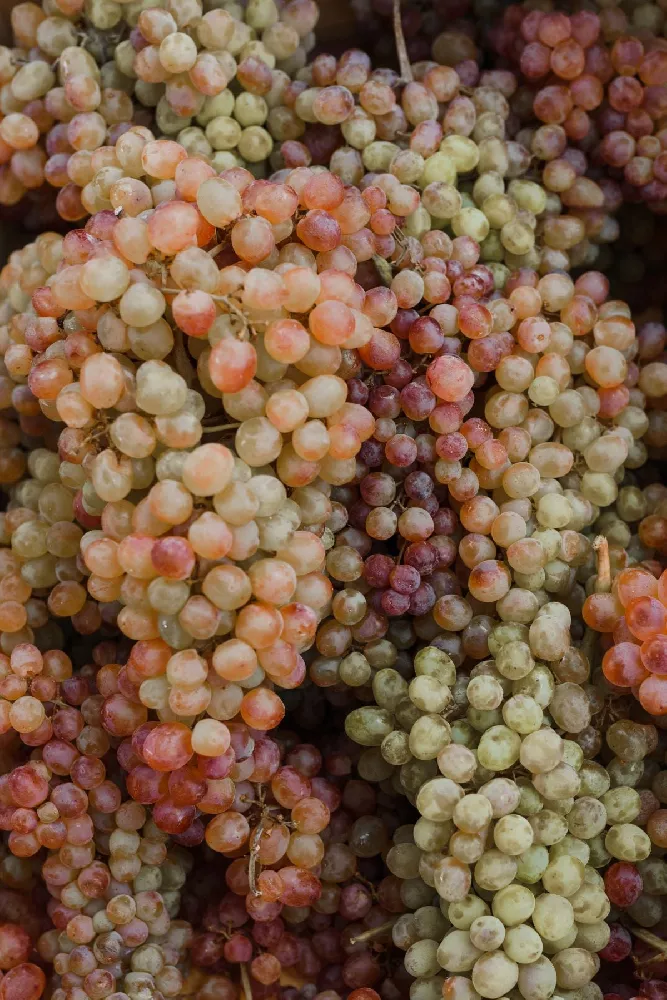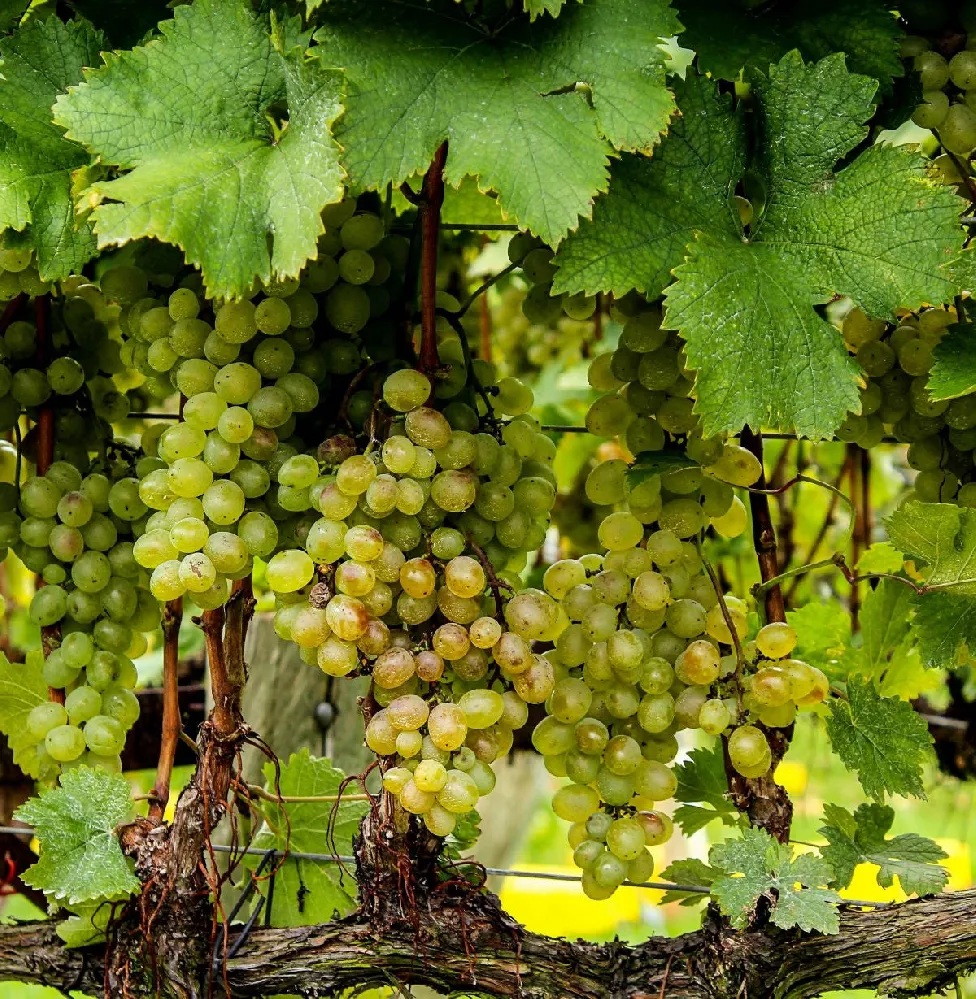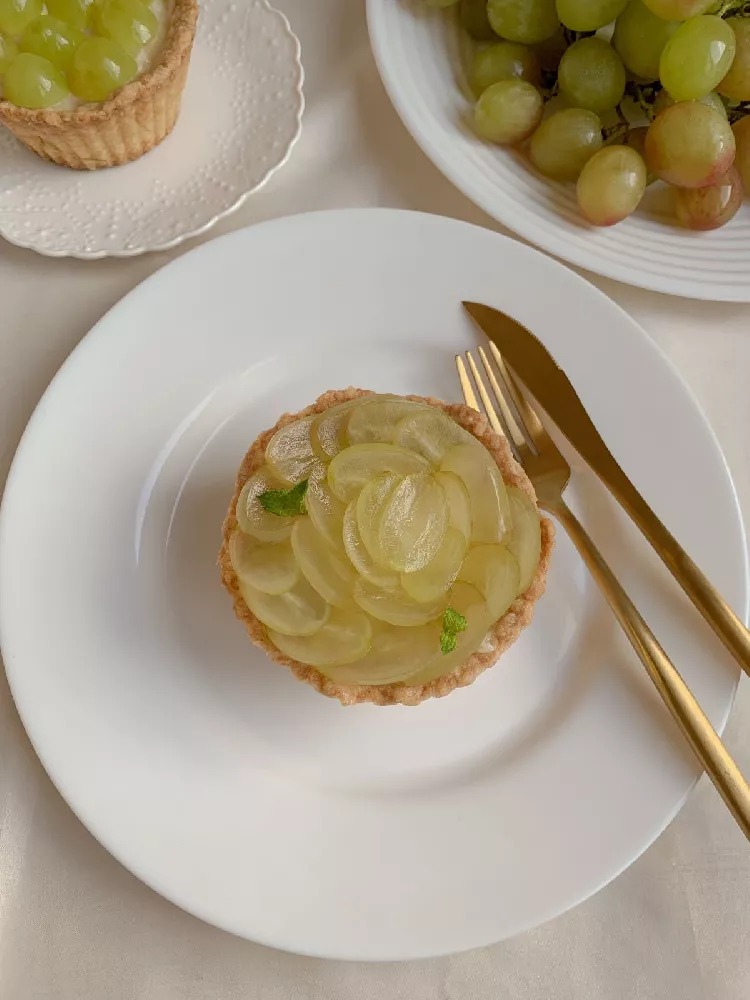- Home >
- Edible Plants >
- Triumph Muscadine Grapevine
Triumph Muscadine Grapevine for Sale - Buying & Growing Guide
If you have ever wished to grow a productive grapevine without the need for constant maintenance, then the triumph muscadine grapevine, also called Vitis rotundifolia, is the plant for you. This grapevine produces a copious amount of large grapes that are perfect for winemaking. You can also incorporate those grapes into many tasty recipes, including jellies and jams. The best part is that this plant remains productive with minimal maintenance. It resists many diseases, is relatively cold-hardy, and does not need too much water to thrive.
- It produces incredible harvests of large grapes.
- It has low maintenance needs
- The grapes are ideal for making wine, jam, and other delicious treats.
Enter your zip code to find nearby stores that may carry this plant.
Plant Care
Sunlight

Requires full sunlight, at least six hours per day, for proper fruit development.
Watering
Fertilize once in spring and once in summer with a balanced, all-purpose fertilizer.
Fertilizing

Apply a nitrogen-rich fertilizer once per year during the early spring.
Planting and Care
Planting instructions
Perhaps the most important growth requirement for a triumph muscadine grapevine is ample sunlight. Without at least six hours of direct sunlight per day, this plant will likely fail to produce healthy fruits. This plant also prefers soils that are moist but well-draining. For this plant, you’ll need a hole that is as deep as the root ball is tall and about twice as wide. In most cases, you’ll want to grow your triumph muscadine grapevine where it can wrap itself around a support structure such as a trellis.
Watering and nutrients
During the first few years of this plant’s life, you will need to water it regularly to keep the soil moist and allow the roots to establish themselves. During the seasons to follow, your triumph muscadine grapevine should have good drought-tolerance. At most, you’ll need to give a mature plant about 1 inch of water or less per week. Your triumph muscadine grapevine will also benefit from two fertilizations per year. The first should occur during the spring, and the second should take place in early summer. For both feedings, you can use an all-purpose fertilizer.
Pollination
Pollination is critical if you wish to use your triumph muscadine grapevine to produce fruit. Interestingly, this plant can come in one of two forms. The first is a male plant that is capable of self-fertilization. The alternative is a female triumph muscadine grapevine, which requires cross-pollination to produce fruits. While this need for cross-pollination in the female version of the plant is a slight inconvenience, these female plants tend to give much higher fruit yields than their male counterparts.
Pruning
Pruning grapevines can be a complex task, but there are a few tips to keep in mind to guide you. Most pruning for this plant should occur during late winter. During the first few years of this plant’s life, you should prune it to encourage a single, strong trunk. After establishing the main trunk, you should establish a few primary lateral branches. These branches will be responsible for bearing this plant’s fruits. You should also use pruning as a way to train this plant to a support structure.
Pests, diseases, and animals
Those who have experience growing grapes know that pests and diseases can be harmful enough to stunt your grapevine’s growth and inhibit its ability to produce fruits. At times, these diseases can even kill your grapevine. The good news is that the triumph muscadine grapevine has an excellent ability to resist pests and diseases, including Pierce’s disease and phylloxera, two complications that are particularly harmful to most types of grapevines. This resilience makes for a productive grapevine that is comparatively easy to maintain.
Harvesting
After choosing a suitable growing location and giving your triumph muscadine grapevine the right care, it should reward you with as many grapes as you could ever want. These grapes typically ripen during mid to late summer and are often ready for harvest between the months of August and September. Typically, it is best to test one or two grapes for sweetness before you harvest the rest. If you find that the flavor is favorable, the chances are that most grapes that look similar will be ready to pick as well.
Achieving maximum results
The triumph muscadine grapevine has several advantages over other types of grapevines. One such advantage is this plant’s ability to withstand relatively cold temperatures. Unlike other grape varieties, the triumph muscadine grapevine is able to survive in regions as far north as hardiness zone 7. Despite that, you should be wary of pruning this plant just before a frost arrives, as the fresh pruning wounds will be incredibly vulnerable to freezing temperatures. For that reason, you should always prune in late winter or early spring when the threat of frost has passed.
FAQs
How long does it take a triumph muscadine grapevine to produce grapes?
Another fantastic trait of the triumph muscadine grapevine is that it can produce grapes at a relatively young age. After just two to three years of life, this plant will reach a level of maturity at which it can produce fruits. Once it enters that phase of its life, the triumph muscadine grapevine plant usually continues producing fruits for about two decades.
When is the best time to plant a triumph muscadine grapevine?
The best time of year to plant a triumph muscadine grapevine is during the late fall or the early spring. During both those seasons, there will be little threat of a heat wave making it more difficult for your triumph muscadine grapevine to establish itself. At the same time, the soil remains warm enough to encourage the roots of this plant to spread through the soil and begin absorbing the nutrients and water that will support healthy growth.
How far apart should you space triumph muscadine grapevines?
In nearly all cases, gardeners will grow more than one triumph muscadine grapevine, with the goal of producing as much fruit as possible. If you choose this route, you should pay attention to spacing when putting your triumph muscadine grapevines in the ground for the first time. Most of the time, these plants need just 1 to 2 feet of space between each other. This spacing should allow you to grow several of these plants in a relatively limited area.
You can't add more Product Name - Product size to the cart.
OK



